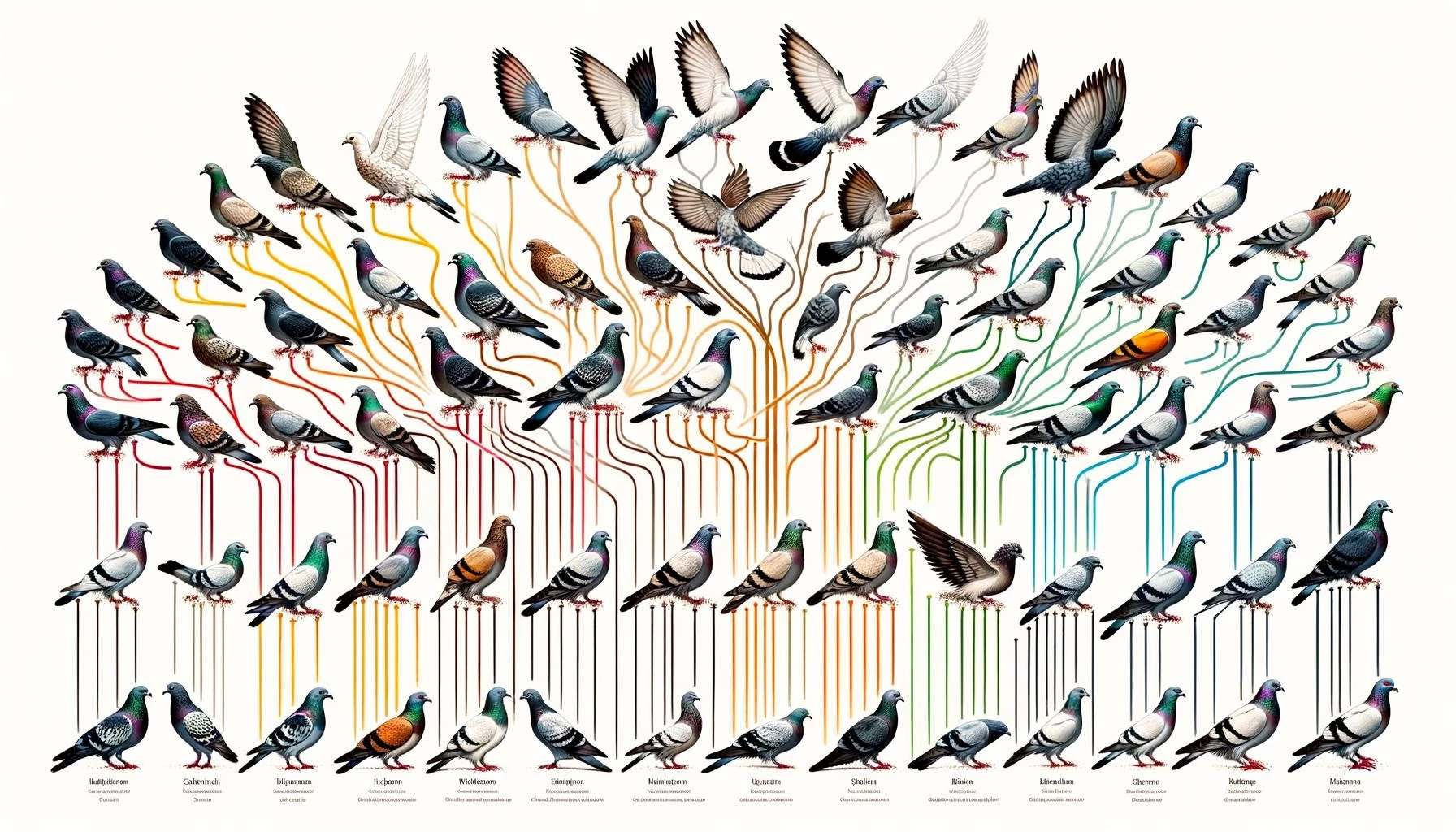Unraveling the secrets of pigeon genetics brings unexpected revelations about the evolution of these ubiquitous birds and even offers a surprising link to human vision defects. From the simple genetic architecture of domesticated breeds to the advantageous genetic variations in wild populations, pigeons provide a fascinating window into the world of avian evolution. As we delve into the color patterns, wing patterns and eye colors controlled by their genes, we also gain invaluable insights into how traits are selected and propagated through breeding. This exploration into pigeon genetics not only enhances our understanding of avian biodiversity but also has potential implications for predicting evolutionary responses in other wild species.
Key Takeaways
- Genetic variations in pigeons can be bred from different species and can be advantageous in wild populations.
- Assessing genetic variance is crucial in predicting evolutionary response in wild populations.
- The genetic architecture of pigeons is relatively simple, making it easier to identify genes responsible for differences among breeds.
The Evolution of Wild Pigeons
Genetic studies have shown that the rock pigeon, which was likely domesticated thousands of years ago, has evolved into highly diverse breeds of domestic pigeons. The feral descendants of these pigeons now inhabit urban environments, where they exhibit a wide range of color patterns and other traits.
In a study conducted by the University of Utah, researchers discovered that different versions of a single gene, called NDP (Norrie Disease Protein), have unexpected links between color patterns in wild pigeons and vision defects in humans. These gene variations were likely bred into pigeons from a different pigeon species and are now evolutionarily advantageous in wild populations of feral pigeons living in urban environments.
Genetic Variance in Wild Pigeon Populations
Assessing genetic variance is a crucial step in predicting the evolutionary response of a target trait. However, the estimated genetic variance may be sensitive to the methodology used, especially in wild populations where social pedigrees can be inaccurate.
Researchers have investigated the additive genetic variance in wild pigeon populations, taking into account the potential inaccuracies in social pedigrees. By understanding the genetic variance, scientists can better understand how traits are inherited and how they can evolve over time. This knowledge is essential for predicting how wild pigeon populations may adapt to changing environments.
The Genetic Architecture of Pigeons
The genetic architecture for many derived traits in pigeons is relatively simple compared to wild species. This is because breeders often focus on qualitative rather than quantitative variation, making it easier to identify the genes responsible for differences among breeds.
Genes controlling color patterns, wing patterns, eye color, and other traits in domestic pigeons have been identified. For example, one gene controls the presence or absence of recessive red coloring in pigeons, and different alleles of this gene determine the coloration of individual pigeons.
Understanding the genetic architecture of pigeons can help biologists and breeders alike in maintaining and improving pigeon breeds, as well as shedding light on the mechanisms that control pigment patterning in birds.
In summary, the evolution of wild pigeons and the genetic variations present in their populations provide an interesting avenue for research. The genetics of pigeons offer insights into how traits have evolved in wild birds and how they can be selected and propagated through breeding. By studying the genetic variability of pigeons, scientists can better understand the evolutionary forces that shape wild populations and domestic breeds.









